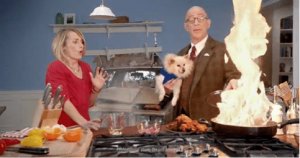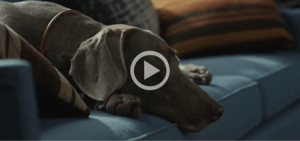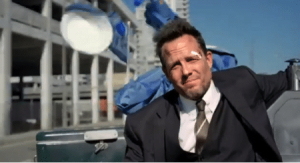 Several years ago I attended a utility communicators’ conference that featured a speaker from a national insurance company. An odd choice to speak to a group of utility communicators, I thought, but I took away some salient points. Insurance companies, like utilities, were a low-interest category among the general public, the speaker said. No controversy there. The speaker further observed the only time most people thought about insurance (or utility service) was when they get the bill or when something bad happens — an auto accident or a power outage.
Several years ago I attended a utility communicators’ conference that featured a speaker from a national insurance company. An odd choice to speak to a group of utility communicators, I thought, but I took away some salient points. Insurance companies, like utilities, were a low-interest category among the general public, the speaker said. No controversy there. The speaker further observed the only time most people thought about insurance (or utility service) was when they get the bill or when something bad happens — an auto accident or a power outage.
For many years, the speaker continued, insurance advertising had been sober and fact-based. But messages weren’t sticking, and sales were falling. To break free of its institutional challenges, the speaker said insurance companies were upping their creative game and trying to connect with customers and prospective customers on various levels — besides price. One way was through humor.
 Sure enough, it wasn’t too long before a different flavor of insurance ads began popping up on TV. I’ve already blogged about Prof. Nathaniel Burke (right), the tweedy but likable pitchman for Farmers Insurance who uses unconventional settings to teach newbie agents and customers the ins and outs of insurance.
Sure enough, it wasn’t too long before a different flavor of insurance ads began popping up on TV. I’ve already blogged about Prof. Nathaniel Burke (right), the tweedy but likable pitchman for Farmers Insurance who uses unconventional settings to teach newbie agents and customers the ins and outs of insurance.
Prof. Burke was all over the air a few years back, but Farmers appears to have trimmed its TV ad buy over the last year or so. But other companies have stepped up their ad spend. One insurer, Geico, has found a number of ways to refresh its well-established “15 minutes can save you 15%” positioning statement. One ad features former professional football player Ickey Woods celebrating the purchase of cold cuts while another shows a genie being very literal when someone wishes for a million bucks.
Geico’s TV ads draw a smile and a chuckle. But Allstate’s “Mayhem” campaign scores even higher on the hilarity meter.
That long-running campaign shows a guy named “Mayhem” striking unwitting (and clueless) homeowners and drivers virtually anywhere: when they’re driving to tailgate at a football game, when they’re inside the football stadium after tailgating or when they’re trying to use their GPS to find an unfamiliar address. These ads show how perfectly bucolic everyday settings can turn into potentially expensive disasters that may not be covered by cut-rate insurance.
If you don’t hoot the first few times you see these ads, I recommend you see a doctor, because something’s wrong.
These ads win awards and break through the media clutter because they are visually striking, clever and downright funny. You have to unmute the sound on the TV because you have no idea what is being promoted. A BBQ grill falls off the back of a pickup truck. A minivan explodes in a fiery blast at a football stadium. What in the world is this guy selling? The visuals are so compelling and incongruous that you are forced to listen to the voice-over to find out what is being marketed.
Communications Tip of the Month: On a cost-per-thousand basis, TV ads are among the most cost-effective ways utilities have to communicate with customers. But ads will only be effective if utilities find a way to break through the media clutter with more visually arresting and memorable ads.
And that’s precisely why so many utility TV ads fail to break through. In the main, they’re too earnest and fact-based, unwilling to use the visual gags or the creative premises that Farmers, Geico and Allstate have used so adroitly for years. But by being reticent, utilities risk becoming irrelevant as far as their TV ad message recall goes.
One of the basic principles of marketing and advertising is to “sell the sizzle, not the steak.” That is, marketers and advertisers should emphasize the “sizzle” (how consumers will benefit) rather than the “steak” (the product itself or its discrete features), when promoting a product or service. TV ads from insurance companies have been selling the sizzle for years. But TV ads from utilities, for the most part, continue to emphasize the steak.
Here’s one notable exception: after watching a few hours of utility-company TV ads, courtesy of the E source AdVision database, a TV spot from Reliant Energy jumped out for its embrace of edge. A raucous Project X teen party takes place in a home when the parents are away. The kids think they’ve put one over on the parents. But the parents know exactly what’s going on because Reliant’s Account Alert program informs them that electric use is spiking in their home. Matthew McConnaghey’s voice over is cool and understated, slowly baiting the trap for kids and positioning Reliant’s program as something of a nanny cam, but without all the creepiness.
Unfortunately, that ad can’t be viewed on YouTube anymore because Reliant no longer has the talent rights to the ad. If they run it publicly again, they’ll have to pay additional fees to the talent in the ads. Yeah, like Matthew McConnaghey really needs another paycheck. However, members of E source can still view the ad, called “Party,” on the E source AdVision database.
 Reliant has a number of other TV ads running, but they lack the laugh-out-loud qualities of the “Party” ad. Instead, they tend to bring a smile rather than a guffaw. But they are to be commended for their ability to draw people in. They don’t look like your typical utility TV ad. A lonesome dog sits on a couch, presumably wondering about her master and whether dinner will be delayed. A family meeting takes place – are they planning a vacation trip or wondering why their cell phone bill includes a three-hour call to Belgrade? You’ll just have to listen to the ad to finds out.
Reliant has a number of other TV ads running, but they lack the laugh-out-loud qualities of the “Party” ad. Instead, they tend to bring a smile rather than a guffaw. But they are to be commended for their ability to draw people in. They don’t look like your typical utility TV ad. A lonesome dog sits on a couch, presumably wondering about her master and whether dinner will be delayed. A family meeting takes place – are they planning a vacation trip or wondering why their cell phone bill includes a three-hour call to Belgrade? You’ll just have to listen to the ad to finds out.
 Reliant’s “Party” ad (you’ll just have to trust me), that utility’s more recent ads and years of advertising from Farmers, Geico and Allstate, show it’s possible to take a light-hearted look at serious issues like electricity and insurance in a 30-second TV ad. More utilities should try pushing the creative envelope in their TV advertising. As Oscar Wilde once observed, “the only thing worse than being talked about is being ignored.”
Reliant’s “Party” ad (you’ll just have to trust me), that utility’s more recent ads and years of advertising from Farmers, Geico and Allstate, show it’s possible to take a light-hearted look at serious issues like electricity and insurance in a 30-second TV ad. More utilities should try pushing the creative envelope in their TV advertising. As Oscar Wilde once observed, “the only thing worse than being talked about is being ignored.”






